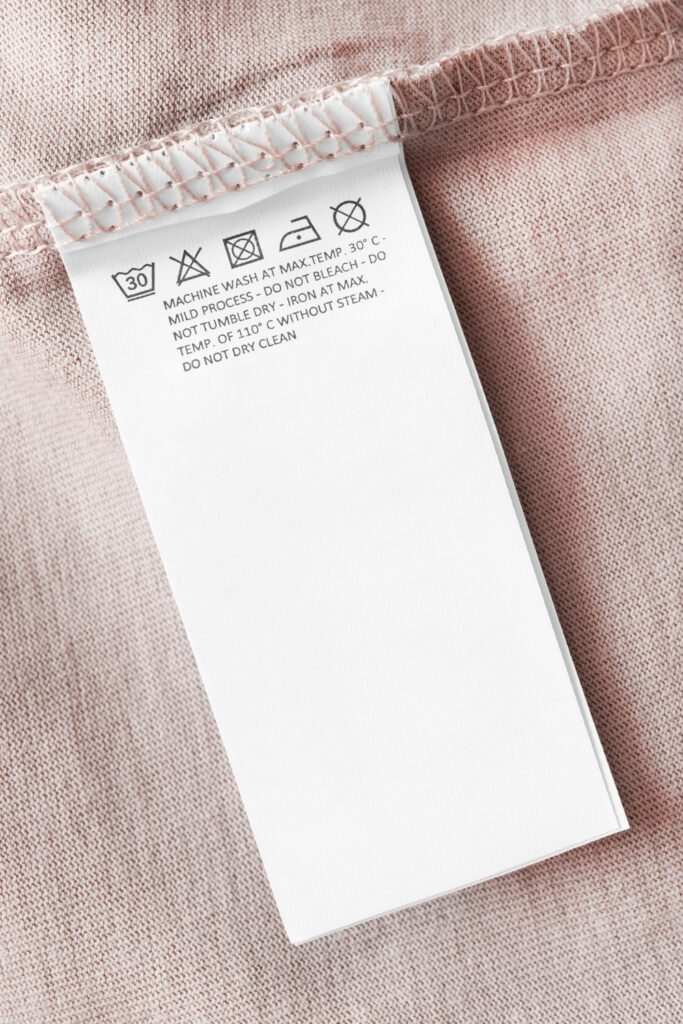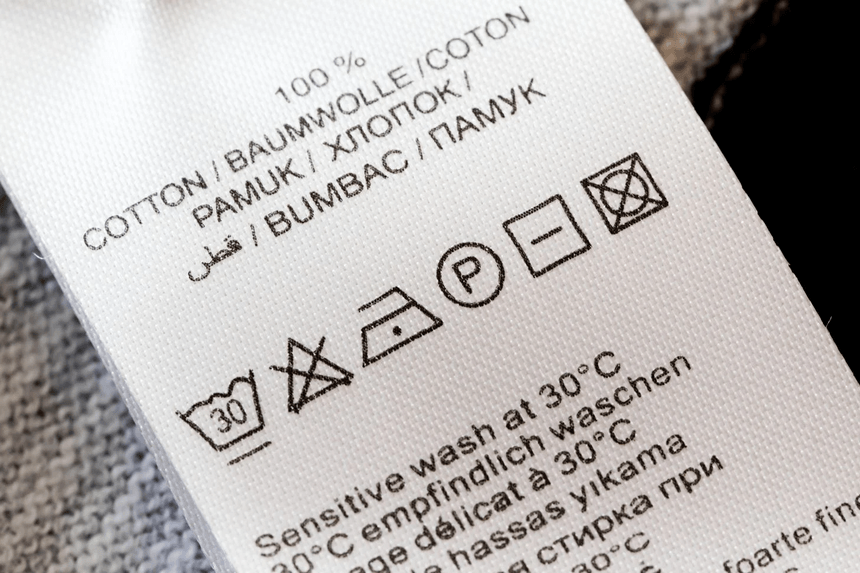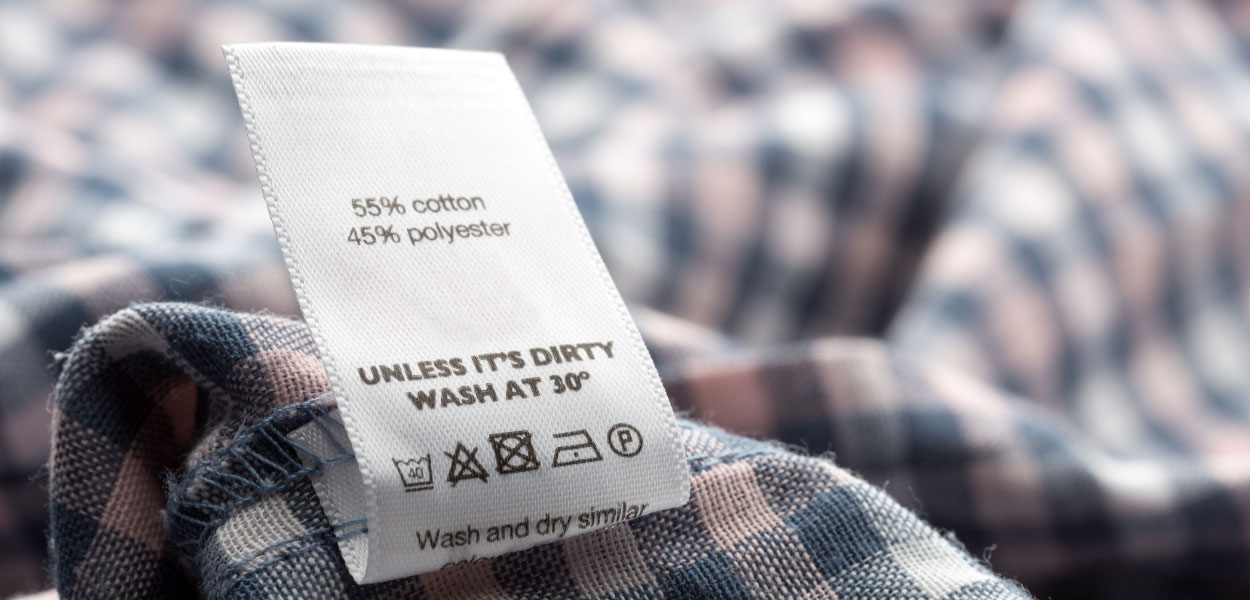We all know the feeling. You get yourself a new shirt. You cannot wait to wear it out, so you don’t even bother to wash it first. You’re about to step out of the door, when you feel something on your lower back. The clothing label is prickling your skin. It’s not pleasant, but you think you can bear it. So you go on about your day.
Clothing Label
You get to work. It’s all going relatively well, until it gets a little too itchy. You want to ignore it, but you can’t. Scratching your back is no longer enough. You need to do something. You didn’t bring a spare t-shirt. It’s becoming intolerable. You go to your last resort: the scissors sitting on your desk. You cut the clothing tag off, and all is well.

But it isn’t. Without realizing it, you have just got rid of one of your biggest fashion allies. The clothing label is anything but an everyday annoyance. It is more of a lifesaver than anything else. It contains an astounding amount of information and is thus essential in many ways. And we are here to help you understand why.
What’s In a Clothing Label?
Garments are legally obligated to include labels. Of course, the specific requirements may vary from country to country. Nevertheless, they are generally very similar to each other. Here, we will focus on the labeling regulations and requirements in the United States of America.
The Placement
In general, clothing labels need to be firmly attached to the garment until it reaches the consumer. Hence, they cannot be loosely adhered to it in the way that hang tags are. Most brands thus resort to sewing labels onto the clothes themselves.
Additionally, labels are required to be easily noticeable. Therefore, they must be conspicuously located, so that their position within the garment is evident to the consumer.
The Fabric’s Content
The labeling of a garment must contain information pertaining to its contents, with the materials recorded under their generic names. The list must begin with the one holding the highest content percentage and end with the one holding the lowest.

The Country of Origin
Famously, all clothing pieces are required to include a label specifying their place of production. This information need not be featured in the same label as the fabric’s content and care instructions.
The Washing and Care Instructions
A clothing label must contain sufficient information to help the consumer care for their product. Surely, the washing practices that the garment would benefit from and those that would harm it should be made explicit. The labelling containing such information should be tailored to last as long as the piece itself.
The Manufacturer’s Identification
Finally, a garment label must include the brand’s registered identification number. The company’s name can also be featured.
Now that you know the information that clothing labels must contain, the reasons behind their importance might seem obvious. Of course you would like to know how to properly wash your clothes. Of course you would like to know what they are made of. Nevertheless, such reasons are rather superficial. In reality, a garment’s labelling can help us with much more.
The Clothing Label Is Making Us Smarter Consumers
Though not many do it, reading labels before buying clothes is imperative. It can help one make purchases that are specifically tailored to one’s wants and needs.

Avoiding Unnecessary Expenses
There are a number of garments that are “Dry Clean Only.” Merely keeping them clean could represent a substantial investment for some. In such cases, skimming through a piece’s care label before buying it can help one avert needless expenses.
Finding What You Are Looking For
One often has a specific aim when shopping for clothes. And depending on one’s expectations, one must look for specific fabrics.
For instance, when it comes to weather-specific attire, one might look for either warm or cool materials only. If one is looking for activewear, on the other hand, one might target pieces made out of lycra or polyester. Henceforth, in order to find the perfect fit, the smart consumer must always take a look at a garment’s labelling.
Dodging Health Issues
Allergies to certain materials are far from uncommun. Simply reading clothing labels might help those affected circumvent dangerous situations and opt for hypoallergenic fabrics exclusively.
Surely, clothing labels allow us to become smarter consumers. But they confer even more benefits to those looking to reduce the negative environmental impact of their purchases.
Labels and Sustainability
People often link transparency and stayinf informated to sustainability. Surely, the more we know about what we consume, the easier it is to consume sustainably. Since labels provide the information we need about potential purchases, they are the perfect tool to help us become responsible consumers.
Extending the Lifespan of Our Clothes
Consuming sustainably is all about making our purchases last. Keeping a garment for longer generally means consuming less and reducing one’s environmental impact. Remarkably, a big part of extending our clothes’ lifespan is taking good care of them. Hence the importance of clothing labels.
By indicating the best ways to wash and care for our clothes, labels allow us to wear them for longer. Indeed, it is estimated that consumers can extend the lifespan of a garment by 50-80% by following label instructions. Therefore, if we, as consumers, want to be as environmentally-conscious as possible, then we must pay attention to clothing labels.
Avoiding Non-Environmentally-Friendly Fabrics
It is a well known fact that the production of certain fabrics and materials is particularly destructive for the environment. Since garment labels give us insight into what our clothes are made of, they allow us to avoid such materials. Hence, they can help us reduce our carbon footprint and general environmental impact.
Avoiding Non-Environmentally-Friendly Care Methods
Some washing methods such as dry cleaning are surprisingly harmful to the environment. Once again, one can easily avoid participating in such methods by simply reading a garment’s clothing label before purchasing it.
What To Take Away
In conclusion, it seems that clothing labels are more important than you might have thought. Whether it is to make you a smarter or a more responsible consumer, those little tags are your perfect allies. Next time, take a moment to consider their benefits before you cut them off.
Did you like this article? Check out everything you need to know about ethical fashion.






